Federal and State Listed Species of Texas:
Navasota ladies’-tresses
Global Location
Navasota ladies'-tresses is known from the Post Oak Savannah in Bastrop, Brazos, Burleson, Fayette, Freestone, Grimes, Jasper, Leon, Limestone, Madison, Milam, Robertson, and Washington counties in eastern Texas.
null
Credit:
Description
An erect, 15-33 cm tall perennial, Navasota ladies’-tresses has basal leaves that end in a point and have roughly linear sides. The leaves are absent on Navasota ladies’-tresses when it flowers. A single row of creamy white flowers spiral around the upper 5 cm of the floral stalk (this tight, vertical spiral has about five flowers per rotation). A single, green, leaf-like structure (a bract), which is teardrop-shaped, 8-10 mm, and white-tipped, cups the base of each flower. Three white petal-like structures (sepals) surround the three smaller petals. There is one upper sepal and two lower, narrowly triangular side sepals. All are covered in a layer of minute hairs. Interior to the sepals are three creamy white petals, which consist of two side petals and one lower petal. The side petals are egg-shaped to almost round and have a central green stripe. The single bottom petal is oval. The fruit dries at maturity, splits open, and releases many seeds.
Navasota ladies'-tresses have green, white-tipped leaf-like structures, which cup the base of each flower. The flowers have sepals that are longer than the petals.
Credit: Jackie Poole - Texas Parks & Wildlife Dept.
null
Credit:
null
Credit:
Similar Species
Two other ladies'-tresses are similar to Navasota ladies’-tresses and occur in the same habitat: nodding ladies’-tresses (Spiranthes cernua) and slender ladies’-tresses (Spiranthes lacera var. gracilis). However, the creamy white petals of Navasota ladies’-tresses are shorter, rounder, and the lower petal is oval. Each flower has a central green stripe on its side petals and white-tipped bracts, which attach just under the flower’s base. Below is a table that can be used to identify the three species.
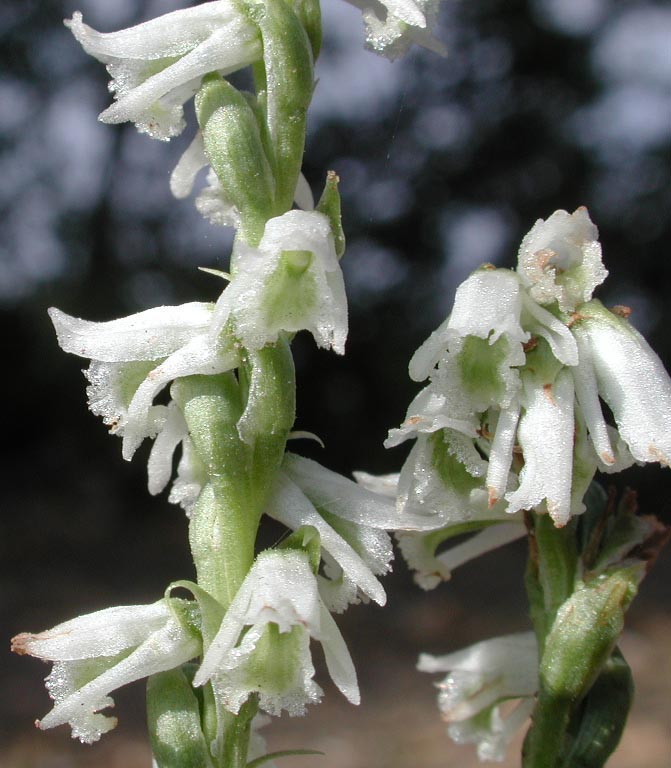
Slender ladies’-tresses flowers have a lower petal with a green center and the sepals are longer than the petals.
Credit: Hugh Wilson - TX A&M Vascular Plant Image Gallery
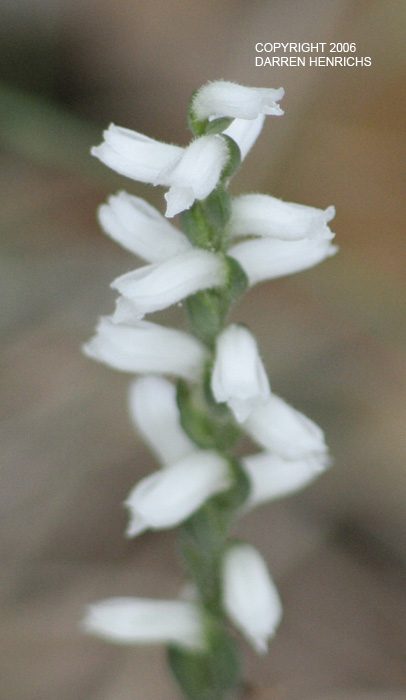
Nodding ladies’-tresses has a 'closed' flower type where the sepals and petals remain clasped together.
Credit: Darren Henrichs - TX A&M Vascular Plant Image Gallery
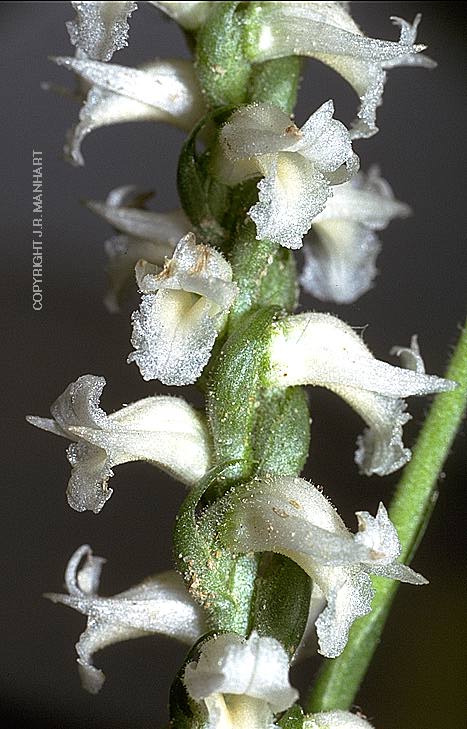
Nodding ladies’-tresses have all green leaf-like structures, which cup the base of each flower, and the flowers have a lower petal with a yellow center.
Credit: James Manhart - TX A&M Vascular Plant Image Gallery
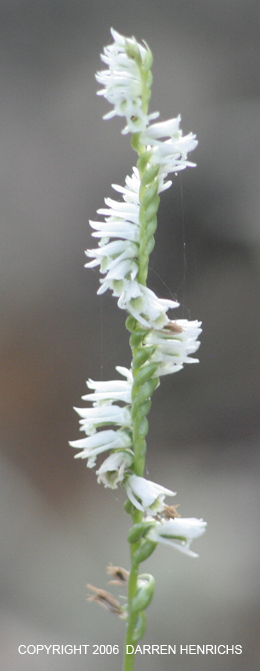
The flowers of slender ladies’-tresses are generally more numerous and spiral less tightly around the floral stalk than Navasota ladies’-tresses.
Credit: Darren Henrichs - TX A&M Vascular Plant Image Gallery
null
Credit:
null
Credit:
Floral Characters
| petal color | lower petal coloring | side petal shape | sepal longer than petal? | lower petal shape | bract tip color | |
|---|---|---|---|---|---|---|
| Navasota ladies'-tresses | creamy white | green stripe (usually) | egg-shaped to almost round | yes | oval | usually white |
| slender ladies'-tresses | creamy white | green center | teardrop | yes | egg-shaped | green |
| nodding ladies'-tresses | bright white | often yellow center | narrow teardrop | no | egg-shaped (can be constricted in the middle) | green |
Leaf Characters
nullnull
Credit:
null
Credit:
null
Credit:
Habitat
Navasota ladies’-tresses occurs primarily in openings of post oak woodlands in sandy loam soils, often over an impermeable clay layer, adjacent to drainages and seasonal streams. In Jasper County, the orchid grows in grasslands and post oak-black hickory woodlands, and in association with sandstone glades.
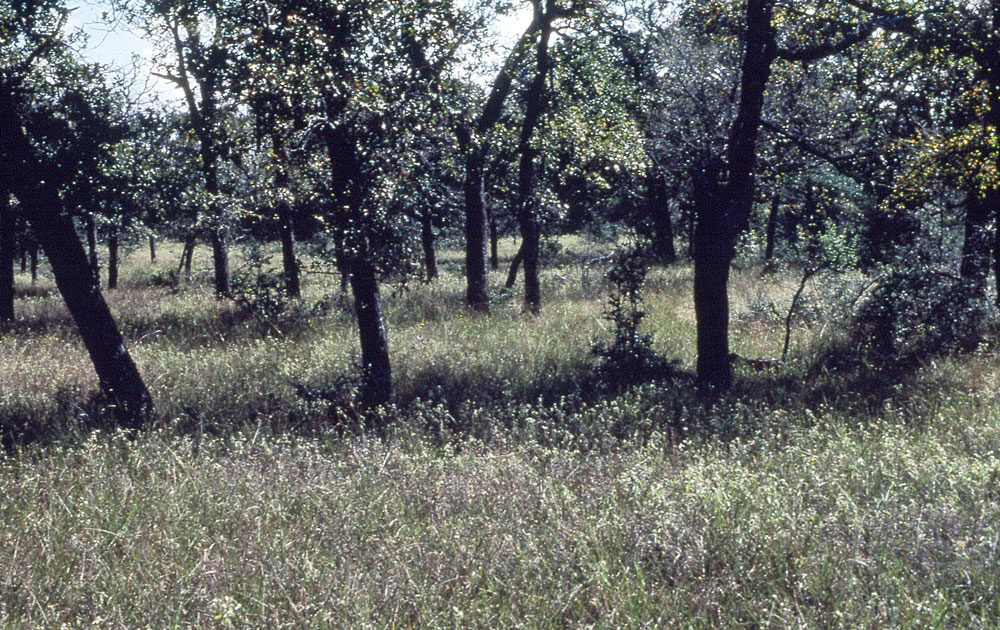
Habitat of Navasota ladies’-tresses.
Credit: Elray Nixon - Stephen F. Austin State University
Life Cycle Events
Flowering occurs from October to December.
Survey Season
Navasota ladies’-tresses are recognizable while in bloom from October to December.
Citations
- Wonkka, C.L. 2010. Large herbivore impact on demographic characteristics and population dynamics of an endangered orchid (Spiranthes parksii Correll). Dissertation. Texas A&M University
- Wilson, H. Distinctive features of Spiranthes parksii as compared to other fall-blooming species in the Navasota Flora.
Additional Information
- Rare Plants of Texas
- U.S. Fish and Wildlife Service
- NatureServe
- Center for Plant Conservation
- Flora of North America
- Poole, J.M. and G.K. Janssen 1997. Managing and monitoring rare and endangered plants on highway right-of-ways in Texas. Section 6 final report. Austin: Texas Parks & Wildlife Department.
- Wilson, H. Spiranthes parksii - Endangered Orchid of the Texas Post Oak Savannah.
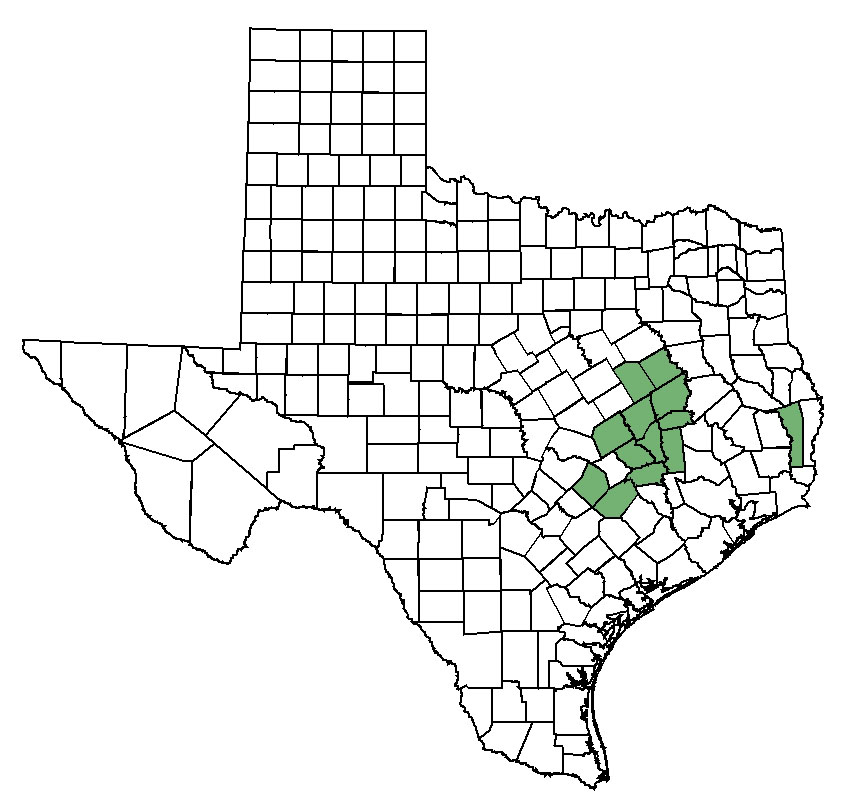
Comments
During germination, before a new plant can obtain nutrients from the soil, many plants have readily available supplies from inside the seed coat. Orchids, on the other hand, do not; instead they provide their young essential nutrients in other ways. Orchids live in fungi-rich soils that provide the plant with nutrients. In turn, fungi can live off of decaying plant and animal matter. Because fungi are so important to Navasota ladies’-tresses’ survival, the distribution of the root fungus likely influences the orchid’s range and juvenile survival (Wonkka 2010)